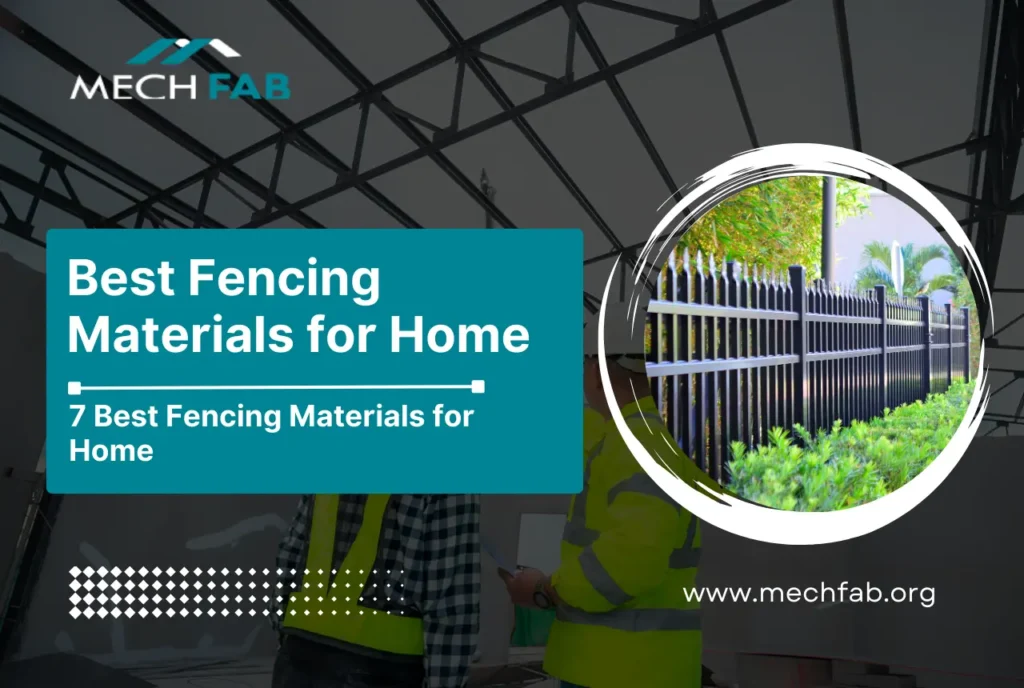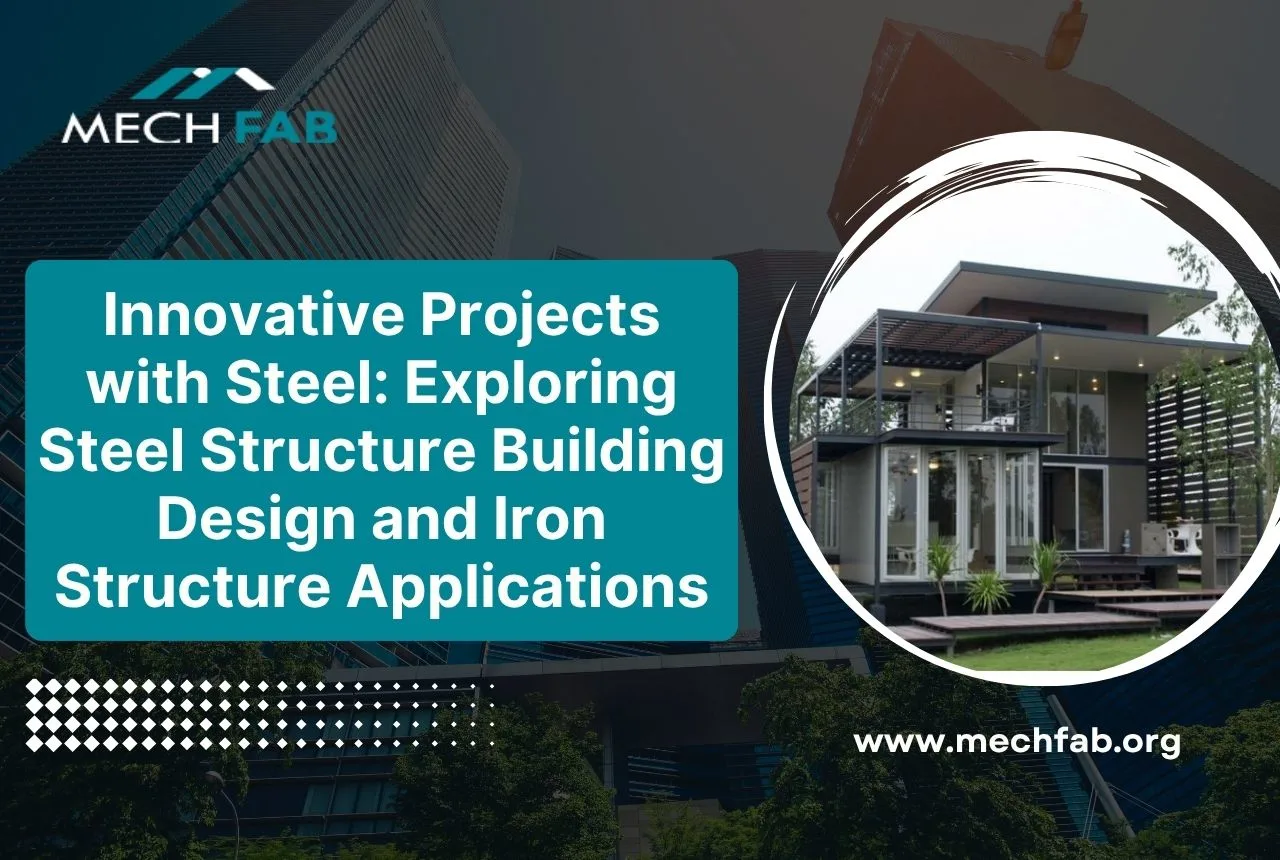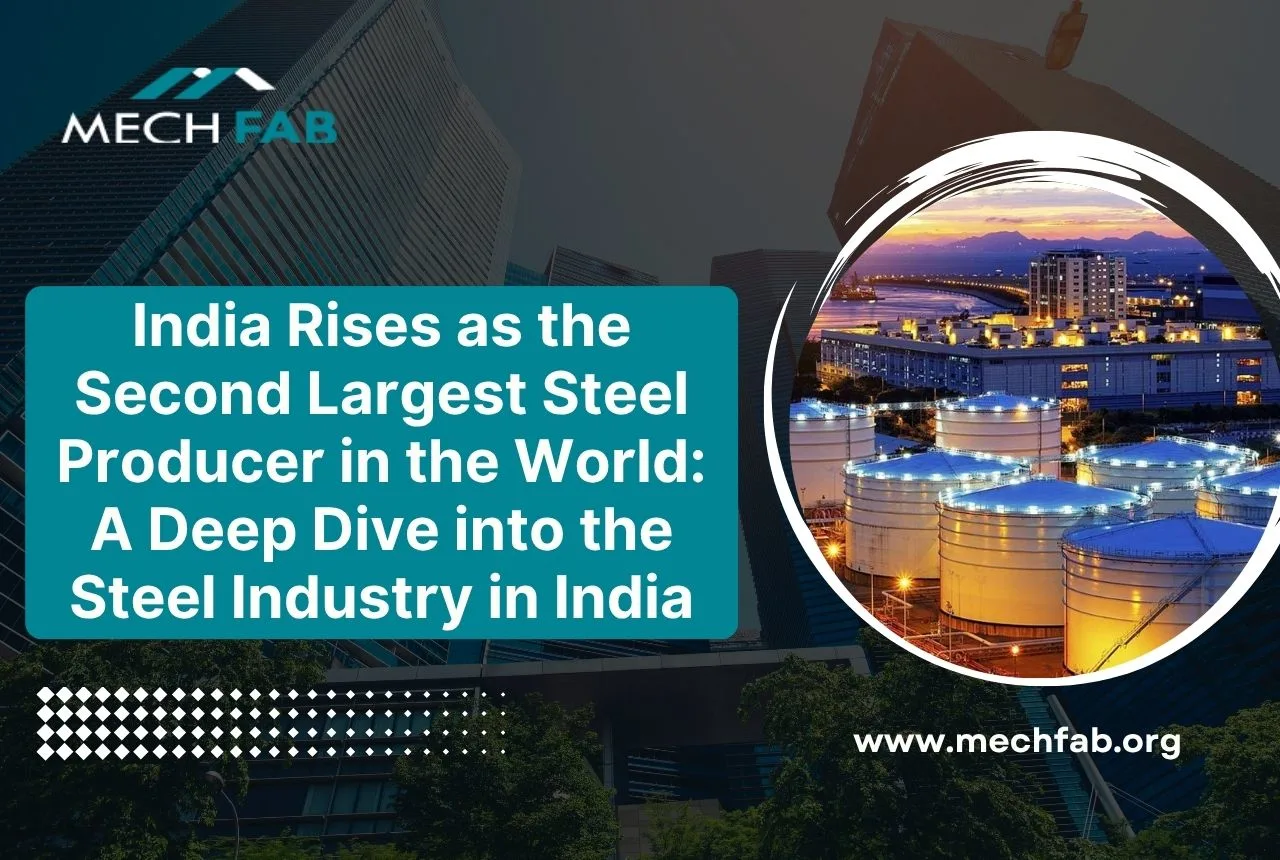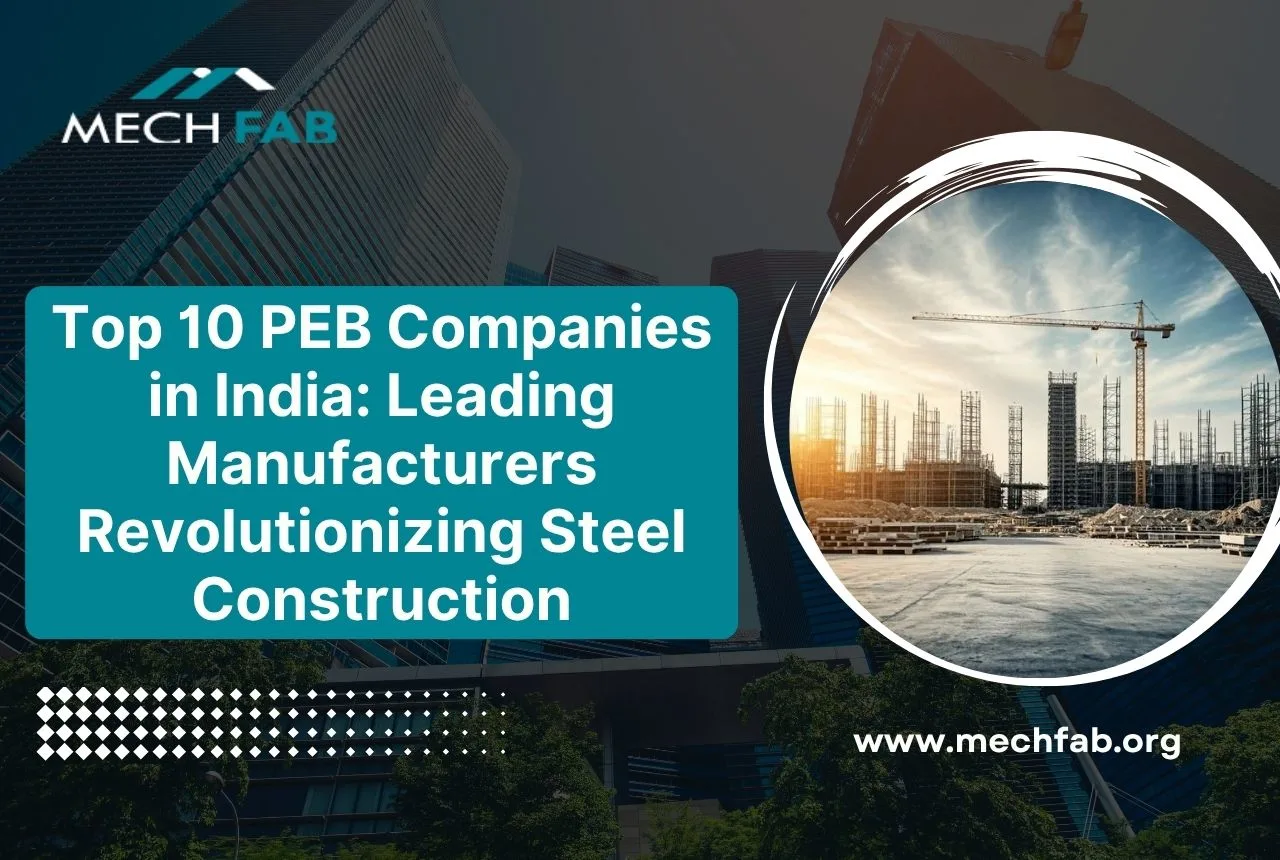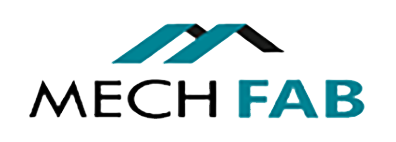Fencing is one of the most essential aspects of home security, offering a barrier that enhances both protection and aesthetic appeal. A strong, durable fence keeps intruders away while boosting your property’s visual appeal. As we move into 2025, homeowners are increasingly investing in modern, innovative fencing materials to elevate their security and style. Whether you’re looking for something sturdy or something that stands out, there are plenty of options available. This guide will take you through the best fencing materials for homes that blend security with beauty, all while catering to different needs and preferences.
Best Fencing Materials for Home
When it comes to choosing the best fencing materials for your home, the decision should be based on several factors. Fencing plays a crucial role in providing security, privacy, and curb appeal, so the material you choose needs to serve a purpose. Some fences are built to withstand heavy weather conditions, while others provide an elegant touch to your property’s overall look. The best materials will balance durability, ease of maintenance, and security features.
Key criteria to consider include:
- Durability: How well the material withstands the test of time, weather, and wear.
- Maintenance: The ease or difficulty of maintaining the material.
- Cost: Whether it fits within your budget.
- Security: Does it keep intruders out and protect your privacy?
Let’s explore the top fencing materials that homeowners are opting for in 2025.
Top 7 Fencing Materials for Homes
1. Wood Fencing
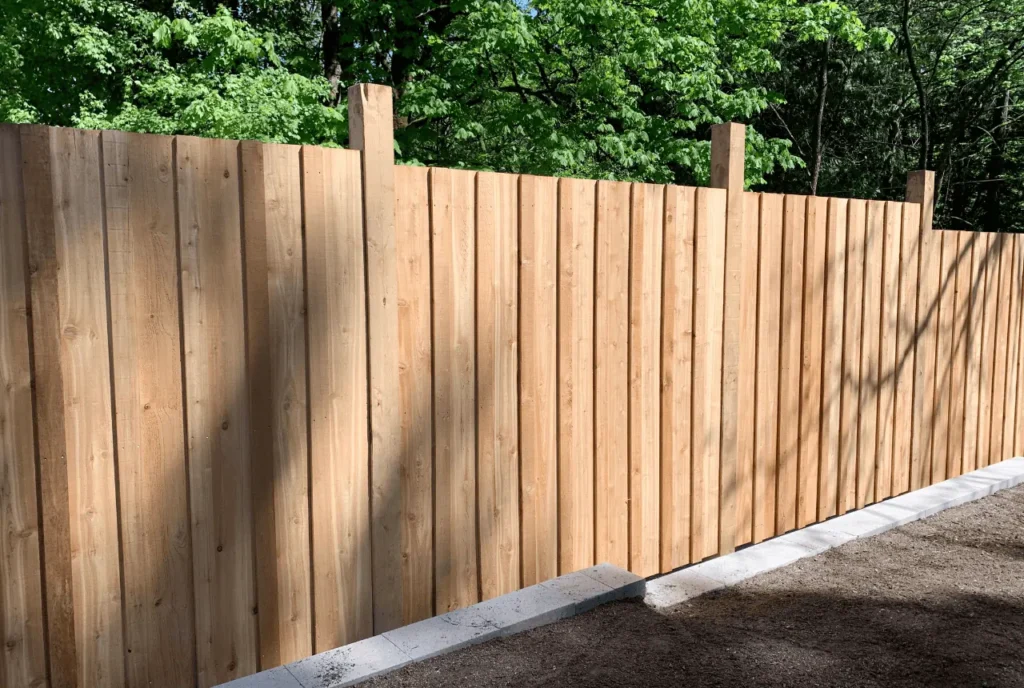
Wooden fences have been a classic choice for homeowners for decades. They offer a natural aesthetic that can blend seamlessly into your landscape, adding warmth and charm to any home. Whether you choose a traditional picket fence or a more robust privacy fence, wood fencing is customizable to suit your preferences.
Pros:
- Aesthetic appeal: Natural, rustic look that enhances any home.
- Customizable: Can be painted or stained to match your home’s exterior.
- Variety of styles: Available in different types, including privacy fences, picket fences, and more.
Cons:
- Maintenance: Wood fences require regular maintenance such as staining or painting to prevent rot, warping, and pest damage.
- Susceptible to pests and weather: Wood can be prone to damage from termites, mold, and harsh weather conditions.
Recommended Types: Cedar and redwood are the most popular types of wood used in fencing due to their natural resistance to decay and insects.
2. Vinyl Fencing
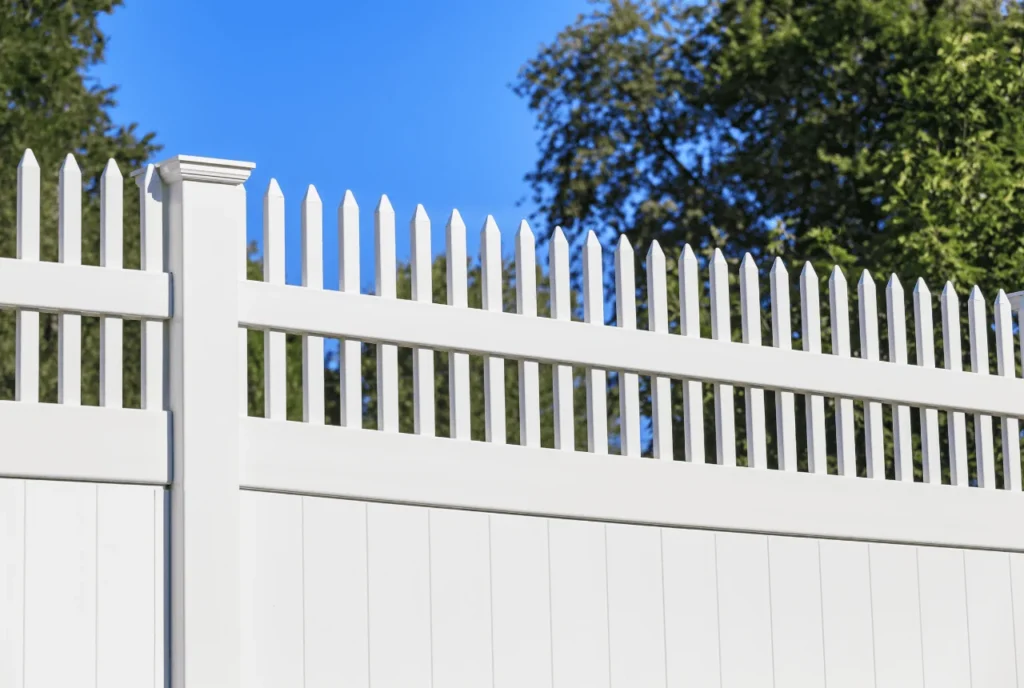
If you want a fence that requires little upkeep, vinyl fencing could be the perfect choice. Made from durable PVC, vinyl fences are low-maintenance and resistant to fading, cracking, or peeling. They’re also available in a wide range of styles and colors, though they might be limited compared to wood.
Pros:
- Low maintenance: No painting or staining required.
- Durability: Resistant to weather conditions, including UV rays and moisture.
- Pest-resistant: Vinyl is not susceptible to pests like termites.
Cons:
- Higher upfront cost: The initial cost of vinyl can be higher than wood or chain-link.
- Limited color options: Vinyl fencing typically comes in white, tan, or gray, which may limit aesthetic choices.
Vinyl fences are perfect for creating privacy around your property while providing a clean, modern look.
3. Chain Link Fencing
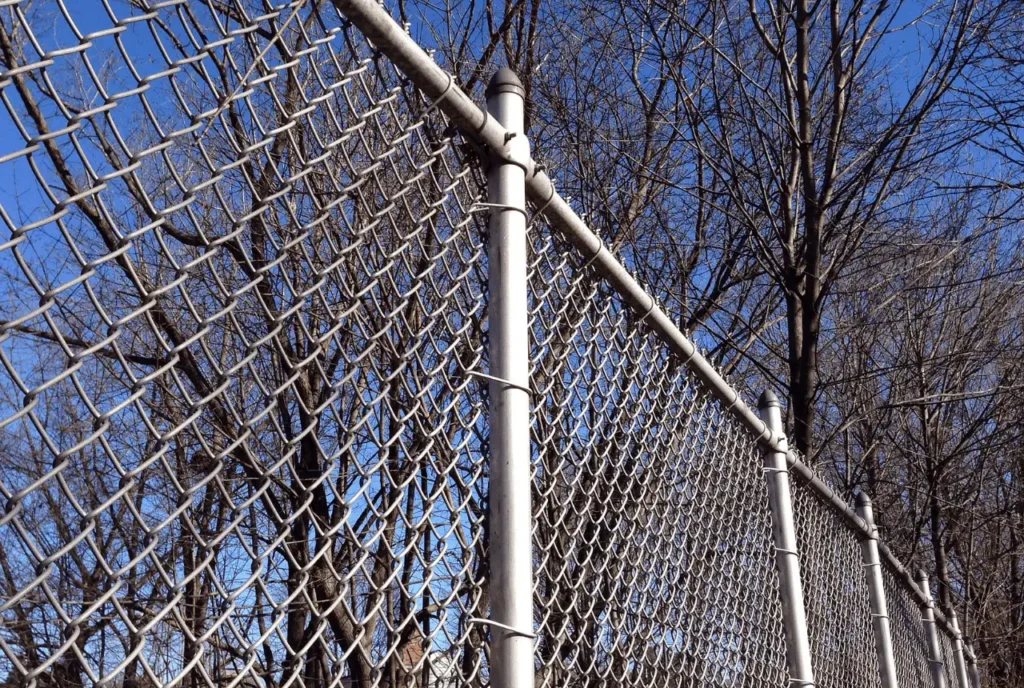
Chain link fencing is one of the most cost-effective and widely used types of fencing for residential properties. It’s easy to install and offers good visibility, which can be beneficial if you want to monitor your surroundings. However, its aesthetic appeal may not be as strong as other materials.
Pros:
- Affordable: One of the most cost-effective options available.
- Easy installation: Quick and simple to set up.
- Good visibility: Allows for clear sightlines around the perimeter.
Cons:
- Limited privacy: Offers very little in terms of seclusion or privacy.
- Aesthetic appeal: Chain link is often seen as less visually appealing compared to other materials.
Enhancement options: Adding vinyl coating to the chain-link or inserting privacy slats can improve both privacy and appearance.
4. Metal Fencing (Wrought Iron & Aluminum)
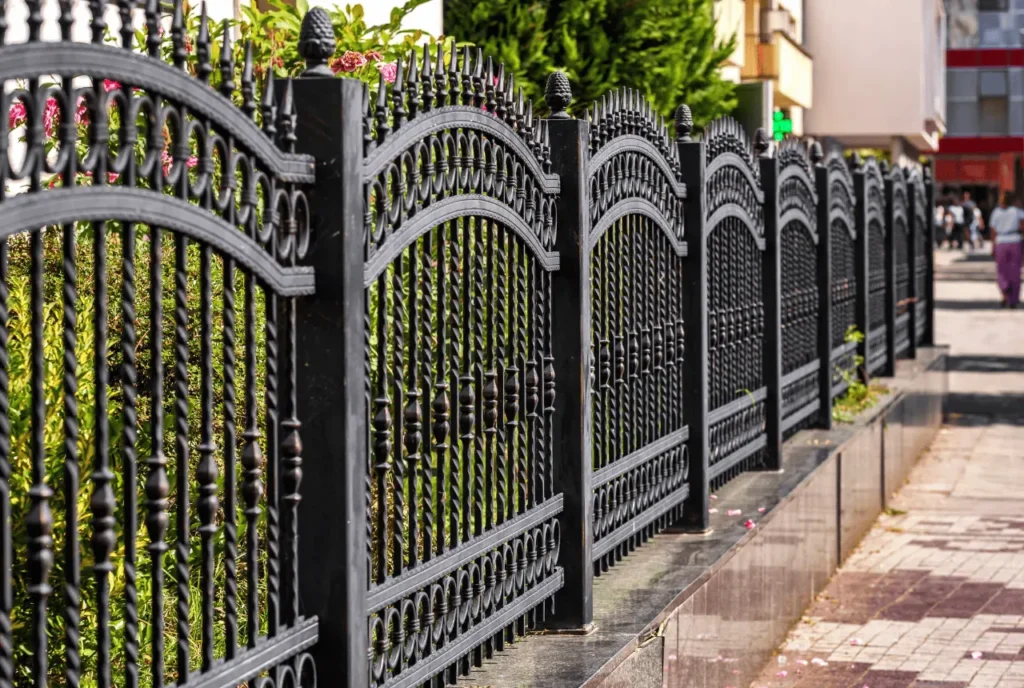
Metal fencing is one of the best options if you are seeking a high-security fence. It provides strength and durability, and when well-maintained, it can last for many years. Wrought iron and aluminum are the two most common materials for metal fences, each offering its own benefits.
Pros:
- High durability: Metal fences can last for decades, resisting the effects of weather and wear.
- Security: Metal fences provide excellent security, making them perfect for properties where protection is a top priority.
- Low maintenance: With proper treatment, these fences can resist rust and require minimal upkeep.
Cons:
- Initial cost: Metal fences can be more expensive to install than wood or chain link.
- Rusting: If not treated properly, iron fences can rust over time.
Wrought iron fences are known for their elegant look, while aluminum fences are lighter and require less maintenance.
5. Composite Fencing
Made from a blend of recycled wood and plastic materials, composite fencing is a great option for eco-conscious homeowners. It’s designed to withstand weather, insects, and other environmental factors, making it highly durable.
Pros:
- Eco-friendly: Made from recycled materials, ideal for sustainable homes.
- Low maintenance: Unlike wood, composite fences don’t require frequent staining or painting.
- Durable: Resistant to fading, warping, and pest damage.
Cons:
- Cost: Composite fences tend to be pricier than traditional wood fences.
- Color limitations: Limited color choices compared to wood or vinyl.
Composite fencing provides a beautiful, sustainable option that stands the test of time.
6. Bamboo Fencing
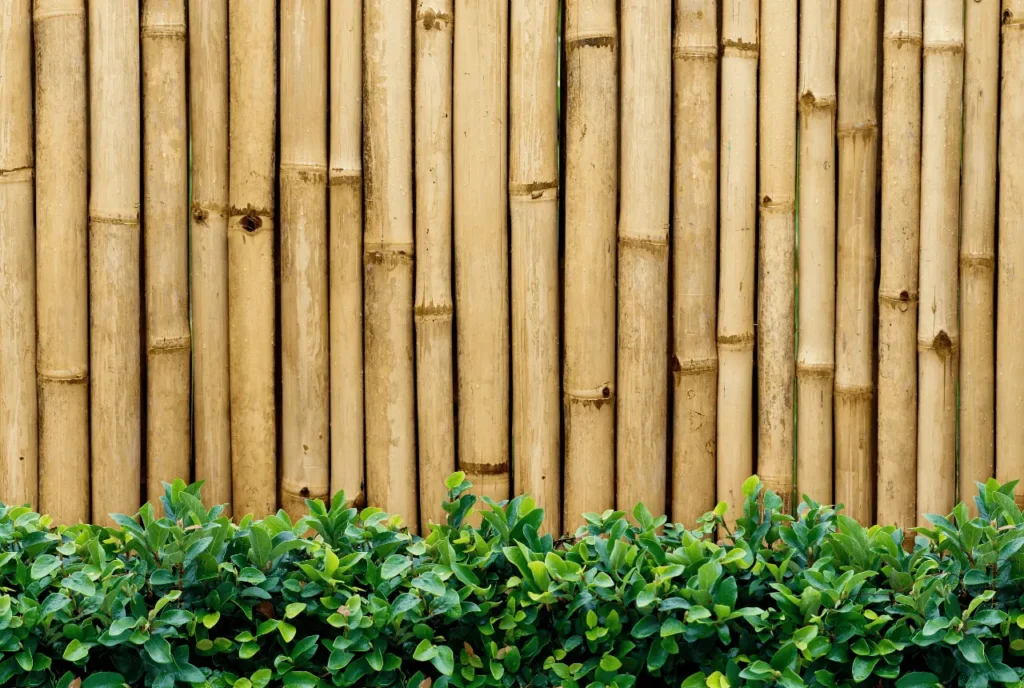
For homeowners seeking a more unique and eco-friendly fence, bamboo fencing is an increasingly popular option. It’s a fast-growing material that offers a distinctive aesthetic and is perfect for those who value sustainability.
Pros:
- Sustainable: Bamboo is an environmentally friendly material, perfect for eco-conscious buyers.
- Aesthetic: Unique and natural look, adding a touch of exotic charm to your property.
- Fast-growing: Bamboo can be replenished quickly, making it a renewable resource.
Cons:
- Less durable: Bamboo is not as resilient in harsh climates and can break down over time.
- Maintenance: Bamboo fences may require more upkeep to prevent damage from moisture and pests.
Bamboo is ideal for homeowners who want something a little different and are looking for an eco-friendly solution.
7. Pre-Engineered Steel Fencing by Mechfab
If you’re in search of a high-security solution with exceptional strength, Pre-Engineered Steel Fencing by Mechfab might be the right choice. As one of the leading manufacturers of fencing solutions in Guwahati and Assam, Mechfab provides steel fencing that is customizable, highly secure, and low maintenance.
Pros:
- Exceptional strength and security: Steel fences are ideal for maximum protection and privacy.
- Customizable designs: Mechfab offers a range of designs that can be tailored to your needs.
- Low maintenance: Steel fences require minimal upkeep and are highly resistant to damage.
Cons:
- Higher initial cost: Steel fencing is often more expensive than other materials due to its durability and customization options.
Pre-engineered steel fences from Mechfab are perfect for homeowners who need top-notch security without the constant worry of maintenance.
Factors to Consider When Choosing Fencing Materials
Choosing the right fencing material goes beyond just aesthetics. It’s important to evaluate several factors before making your decision:
- Purpose of the Fence: Are you looking for security, privacy, or simply a decorative addition? Different materials serve different purposes. For security, steel or wrought iron may be ideal. For privacy, vinyl or wood fences might be better.
- Local Climate: The material you choose should withstand the climate in your area. Coastal areas may require materials that resist rust, while dry, hot climates may need materials that handle sun exposure.
- Budget: The upfront cost of materials and installation should fit your budget. Some materials, like wood, are affordable upfront but may require more maintenance in the long run. Vinyl or composite may have a higher initial cost but are lower maintenance.
Conclusion
Choosing the right fencing material is a crucial decision that can affect both the security and aesthetic appeal of your home. Whether you’re interested in durability, privacy, or visual appeal, the best fencing materials will provide long-lasting value. As trends in fencing continue to evolve in 2025, modern materials like vinyl, composite, and steel offer a perfect balance of style and functionality.
So, assess your needs, weigh the pros and cons of each material, and make an informed decision to elevate both the security and beauty of your property. Remember, your fence is more than just a boundary; it’s an investment in your home’s future.

